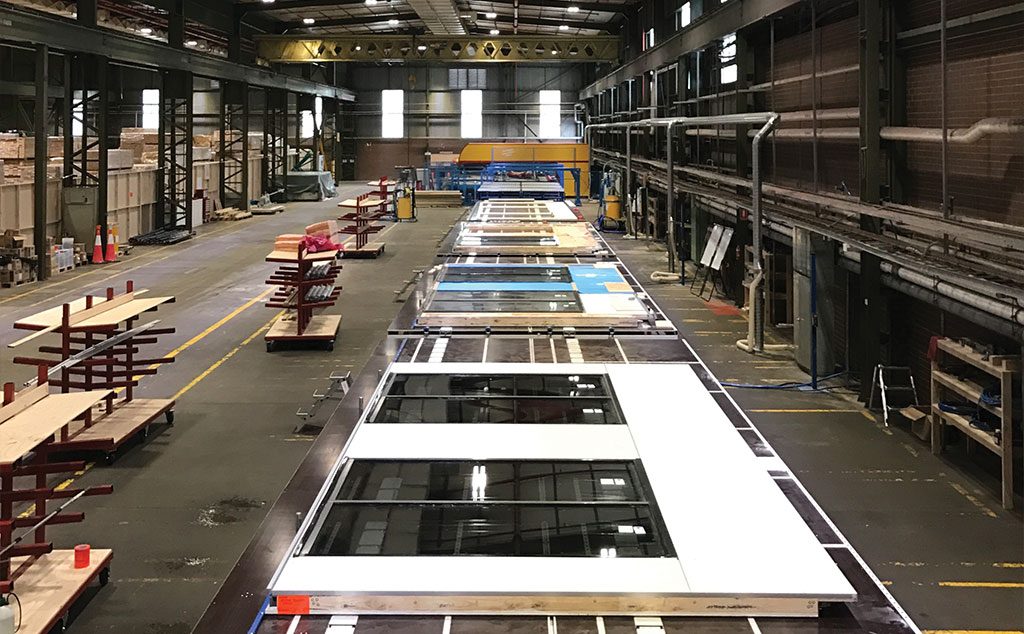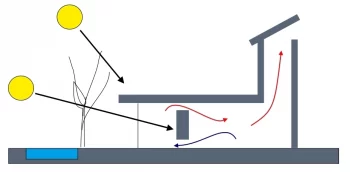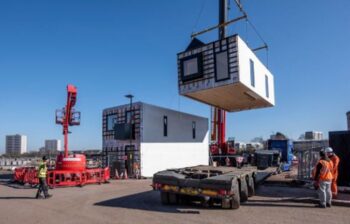Design for Manufacture and Assembly (DfMA)
Design for Manufacture and Assembly (DfMA) must be established as the default approach so that the systems and processes that underpin it are better understood by clients and become second nature to everyone else involved in the design, manufacture and assembly of buildings.
There are four reasons why this is important.
1. Smooth the way to achieving the transformation that the UK Government has outlined for the procurement of its construction pipeline (up to £37 billion in 2021) in many policy initiatives, culminating most recently in the Construction Playbook and the Value Toolkit.
By involving project team members earlier and requiring a higher degree of design resolution before going on-site, DfMA avoids waste and inefficiency, leading to better cost and time certainty as well as cost savings.
2. Strengthen efforts to address the safety of buildings following Dame Judith Hackitt’s review of building regulations and fire safety and supports the Building Safety Bill. By actively looking to do more construction in safer, more closely controlled and factory-like conditions, DfMA generally improves both safe during construction and the quality of the end-product.
3. It will help the construction industry to overcome many of its other long-standing and well-documented shortcomings, notably in productivity, labour supply, process and material efficiency, in-use performance, information management and risk management. Done optimally, DfMA with MMC – especially digitally-enabled offsite processes – addresses all of these concerns.
4. Construction industry to prepare for the inevitable challenges predicted by current global trends, including potentially catastrophic changes in our climate, air quality, biodiversity, natural habitats, availability of natural resources and materials, population size, urbanisation, housing provision and infrastructure capacity.
Design for manufacture and assembly (DfMA) – is a term originating from the world of manufacturing, where it emphasises two practical design considerations – how a component is manufactured, and how it will be assembled into a product – that together have the potential to improve the efficiency of production.
Since these considerations are frequently overlooked in favour of design for use, especially in construction, the emphasis is useful and welcome. The term originally applied to factory-made, mass-produced components that would be assembled into larger mass-produced products destined for an end-user, all in a factory.
With advances in manufacturing techniques, it now commonly applies to making products that can be tailored to vary degrees in a process known as mass customisation. As well as giving consumers more choice, being able to mass customise has widened the relevance of DfMA to include the design of more complex, larger ticket, smaller sales volume products, such as buildings.
DfMA – Manufacturing
In manufacturing, the DfMA process is specifically aimed at improving production efficiency, optimally balancing, on the one hand, market demand for affordable product quality, reliability, aesthetic appeal and all the characteristics that drive sales with, on the other hand, low manufacturing costs, safety, speed, production control, regulatory compliance and other advantages that drive efficient production.
Its development was motivated by commercial considerations, i.e. profit and a need to be able to supply a wider range of products cost-effectively. More recently, the scope has widened to allow social and environmental motivations in response to scientific evidence, market demand, policy incentives and tightening regulations.
DfMA – Construction
DfMA in construction Applied to the construction sector, DfMA is about finding ways to rationalise the design process, improve the selection of materials, and optimise the planning and logistics of the building.
In particular, it exploits opportunities to design built assets using a limited variety of repeated, preferably standardised, components, sub-assemblies or assemblies that can beneficially be manufactured off-site, transported to site viably, and assembled there safely, quickly and straightforwardly. These components or assemblies can be for just a single project or, usually with mass customisation, many different projects.
What are the benefits?
The reasons why we should want to design for offsite manufacture are very similar to the reasons why car manufacturers prefer to design their cars for production in a factory rather than assembling them on buyers’ drives. Design for manufacture makes components simpler to make; design for assembly makes products easier to assemble. The DfMA process combines the functionality of numerous parts into fewer components to achieve the same or improved functionality.
Factory benefits
According to a Buildoffsite report, on-site conditions can be 80% less safe than factory conditions. Construction in a shed does not achieve a safer environment on its own, but manufacturing practices can – especially with more use of industry standards and ensuring that there is competition in pricing.
On-site labour is more than twice as expensive as factory-based labour, productivity in a factory reaches 80% compared to just 40% on-site, and waste is almost entirely eliminated in a factory setting. On top of that, production is more easily controlled and inspected in a factory. Overall, therefore, build quality is improved, outcomes are more certain and costs are minimised.
On-site benefits
Very few buildings can be completed in a factory the way a car can, and so they are always partly made on site. However, because the on-site assembly has been planned, optimised and simplified, less on-site labour is needed and there are fewer preliminary costs and overheads. Compared to business-as-usual construction, work designed with a DfMA mindset should: happen more quickly.
• need:
– less material
– less labour
– less associated management and paperwork
– less rework
• result in:
– less waste
– fewer defects
– safer worksites.
As well as reducing risks, the aggregate cost savings associated with these benefits can be significant. Note, however, that to achieve these benefits, the interfaces between on-site and off-site elements have to be managed effectively.
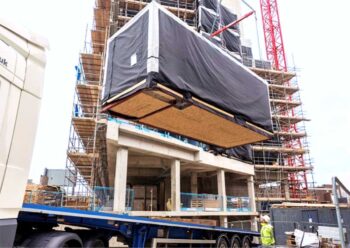
Environmental sustainability benefits
The process also leads to solutions that, regardless of the predominant material used, can be inherently more environmentally sustainable than traditional construction in a variety of ways:
• Less waste: Manufacture in a factory setting means better planning, better production control, fewer errors and, therefore, more efficient use of material and less material waste.
• Lower transportation costs, better air quality, less noise pollution: Since only what is needed for the building is transported to the site, offsite manufacture minimises embodied transport carbon costs both in getting components, sub-assemblies and pre-assemblies to site and in removing waste from the site. It also limits negative impacts on air quality and noise pollution for the same reasons.
• On-site energy and water use: The speed and ease of assembly minimise on-site energy and water consumption, with resulting environmental benefits.
• Less material: Better, earlier design resolution leads to less material redundancy in, for example, unnecessarily large ceiling voids. Repeatedly applied across whole programmes of work, this has the potential to significantly reduce material use.
• Better energy performance in use: The accuracy and quality of components, sub-assemblies and assemblies and their ease of assembly on-site minimises the risk of poor workmanship, helping to close the performance gap between design intent and asset in use.
For example, the use of offsite cut cross-laminated timber (CLT) can lead to outstanding airtightness, which reduces operational energy loads, with huge carbon savings over the asset’s whole life.
• Encourages circular economy: Some components, sub-assemblies and pre-assemblies can be more easily reused, helping with both the project’s whole-life carbon cost prognosis and efforts to activate the circular economy.
Optimising the benefits
To reap the full benefits, components, sub-assemblies and pre-assemblies designed off-site should be standardised to the greatest possible extent, preferably in a way that complies with nationally or internationally agreed universal standards.
Standardised components, sub-assemblies and pre-assemblies are preferred on the assumption that they are tried, tested and therefore known to work, and because they avoid ‘reinventing the wheel’, saving time and design fees, and reducing rework and risk.
Standardisation also enables market competition which is a critical requirement in most procurement processes.
Measuring the benefits
A proxy measure of the success of DfMA is the project’s pre-manufactured value, which expresses the amount of money spent off-site as a percentage of the total project budget. Although not true in all cases, a higher percentage can lead to a more efficient – and therefore better value – project.
The Construction Industry Research and Information Association (CIRIA) recently published a research-based methodology for quantifying the benefits of offsite construction in educational buildings. It can be used by clients and construction management teams to ‘assess the value and benefits achieved on projects.
What is pre-manufactured value?
Pre-manufactured value (PMV) is a measure of the proportion of construction that happens off-site. It is thus an indicator of project efficiency. Expressed as a percentage, it is (according to the Construction Leadership Council’s (CLC) Housing Industry Metrics) calculated as the project’s gross capital cost less the cost of prelims (site overheads) and site labour, divided by the gross capitalized cost.
The higher the PMV, the smaller the proportion of the capital cost that was spent on prelims and on-site labour and so, in theory, the greater the project’s efficiency. The CLC sets the benchmark at 40%: anything above that is better than business as usual. It is also worth noting that, since very few buildings are constructed entirely on-site or off-site, the PMV will never be 0% or 100%.
Standardisation
A large part of the value that comes from DfMA (and MMC more generally) derives from efficiency gains from making the same or similar components and assemblies repeatedly, especially if a standardised process is used to achieve economies of scale.
Standardisation constrains solutions to those that are known to work, in a sense trading the flexibility to tailor for quality assurance. By avoiding ‘reinventing the wheel’, it has the potential to speed up the design and assembly phases of projects.
The standardisation of interfaces is particularly helpful in that it facilitates mass customisation and interoperability, opening markets up to more players, thus enabling market competition. Note that standardised components and assemblies do not standstill. Instead, they evolve in the light of feedback from users, leading to ever-better solutions.
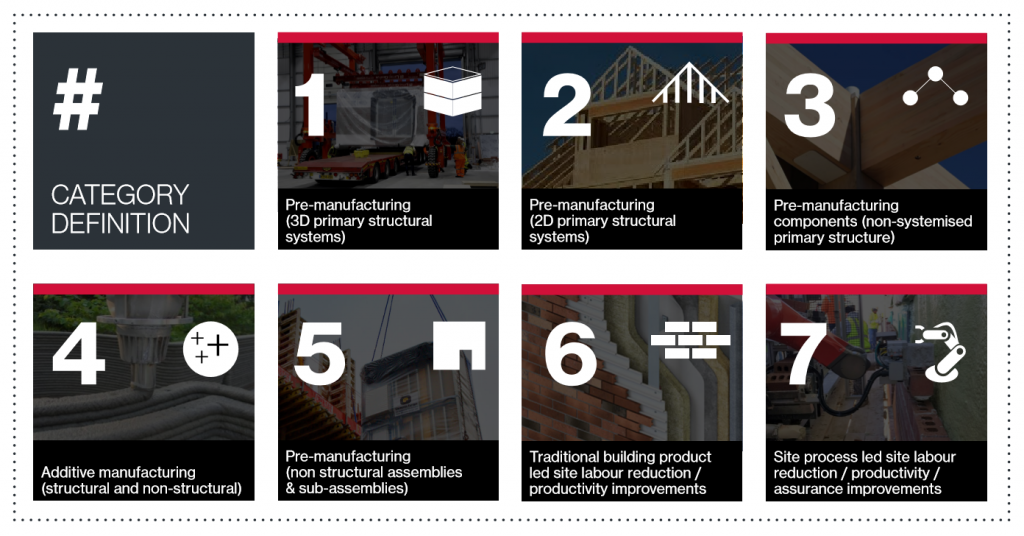
Many other aspects of DfMA benefit from standardisation, including design processes, information exchanges (especially digital ones) and management systems, helping all the many different parties to ‘sing from the same hymn sheet’ and thus avoid wasted effort or rework.
The ultimate expression of standardisation is when it is written down as a nationally or internationally agreed standard, such as those produced by the BSI or ISO.
What will the near future look like?
Leaders in the UK construction industry published a vision for the future of the built environment in April 2021. It sets out the shared, sector-wide ambition to align industry outputs to desirable global outcomes (i.e. the UN Sustainable Development Goals).
In particular, it acknowledges the built environment as a complex ‘system of systems’ comprising built, natural and so-called ‘cyber-physical’ systems. They say that enabling this vision will take two major shifts:
1. New business models for better interdisciplinary integration, not just between traditionally built environment actors but also with government, academia and, crucially, the users of the built environment, which add value by affording better collaboration.
2. Improved digital capabilities, including in systems engineering complexity science, information management and data science, which are all necessary for DfMA, and improved digital tools, including the Internet of Things, artificial intelligence, connected digital twins (see below), virtual reality and robotics, all of which help variously in automation, driving PMV and validation.
New business models
The UK built environment vision is already being implemented through the Government’s Construction Playbook. As its policies take hold, the built environment will be increasingly motivated to industrialise its processes, which will further dismantle the remaining barriers to adopting DfMA and MMC.
In particular, business models developed exclusively to deliver one-off buildings procured in the traditional way will be under pressure to change.
The Transforming Construction Network Plus group produced an essential guide about business models, which it defines as ‘the way a firm creates value and captures a portion of the value for itself. It warns that, because of existing organisations’ ‘dominant logic’, they may find it hard to change their business models. Nonetheless, they should consider doing so if:
• there is an unmet or changing demand in the market
• a new solution opens the market to new customers previously excluded from the market
• new technologies emerge that reshape value delivery (e.g. the internet)
• they need to fend off competition, often from low-cost producers or
• there is a rapidly changing competitive environment, for example, from a focus on cost to one on life-cycle carbon impacts.
Visited 517 Times, 2 Visits today
